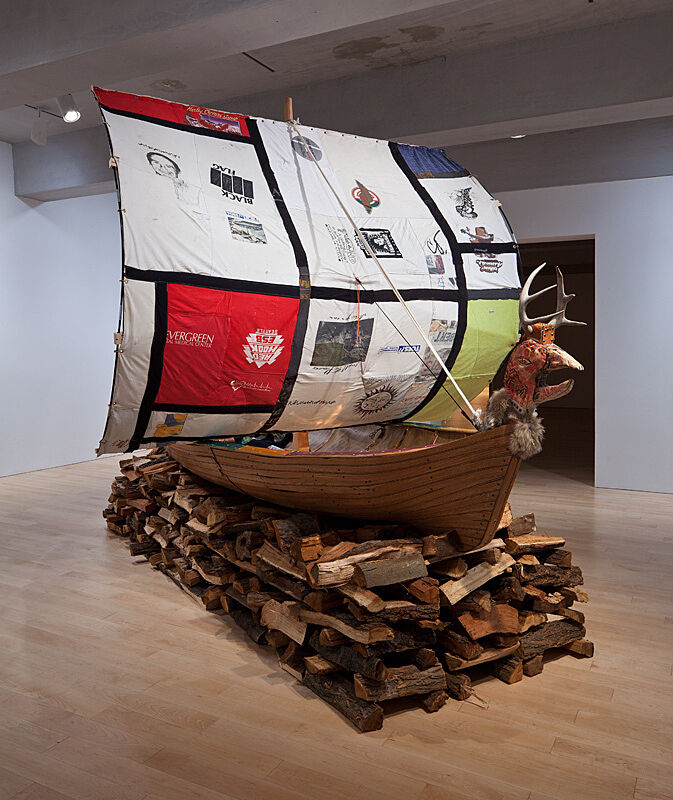On View: Matthew Day Jackson, Sepulcher (Viking Burial Ship)
Aug 14, 2012
Featuring works from the Museum’s permanent collection, the Whitney’s exhibition Singular Visions (December 16, 2010-August 5, 2012) encouraged visitors to slow down and engage with art in an intimate way. I experienced just this when I viewed Matthew Day Jackson’s Sepulcher (Viking Burial Ship). In this 2004 work, the vessel sits on a funeral pyre constructed of roughly cut wood. At first I was struck by the commanding presence of the structure. I noticed the ship’s majestically puffed sail, pieced together with the logos cut from a motley assortment of well-worn T-shirts to create a patchwork of punk bands and beer brands.
These T-shirts reminded me of the concert souvenirs and thrift-store finds that my friends wear in an effort to assert their personal taste, cultural predilections, and sometimes, an ironic sense of humor. As an art history student, I observed that the grid of white, black, red, yellow, and blue shirts mimics the composition of a painting by the twentieth-century Dutch artist Piet Mondrian. This Modernist quotation merges with the clothing to represent both a now canonic, perhaps outmoded, approach to art and the assertion of a hip, self-aware identity.
Inside the boat rests an elaborate costume: an assemblage of hardcore band patches, funky textiles, leather lined with menacing silver spikes, and Birkenstocks. I recalled the gutsy teens I knew in high school who expressed their discontent, individuality, and outsider status through this kind of distinctive clothing. Created in honor of the artist’s thirtieth birthday, the construction of this funeral ship stages Jackson’s fictional death. But it also represents a very real passing— the sending off of youthful, outdated styles of expression and creation. Sepulcher (Viking Burial Ship) evokes the rite of passage that is the transition from youth into adulthood, whether anticipated, remembered, or (for me), a current experience.
By Elizabeth Rooklidge, Interpretation Intern

